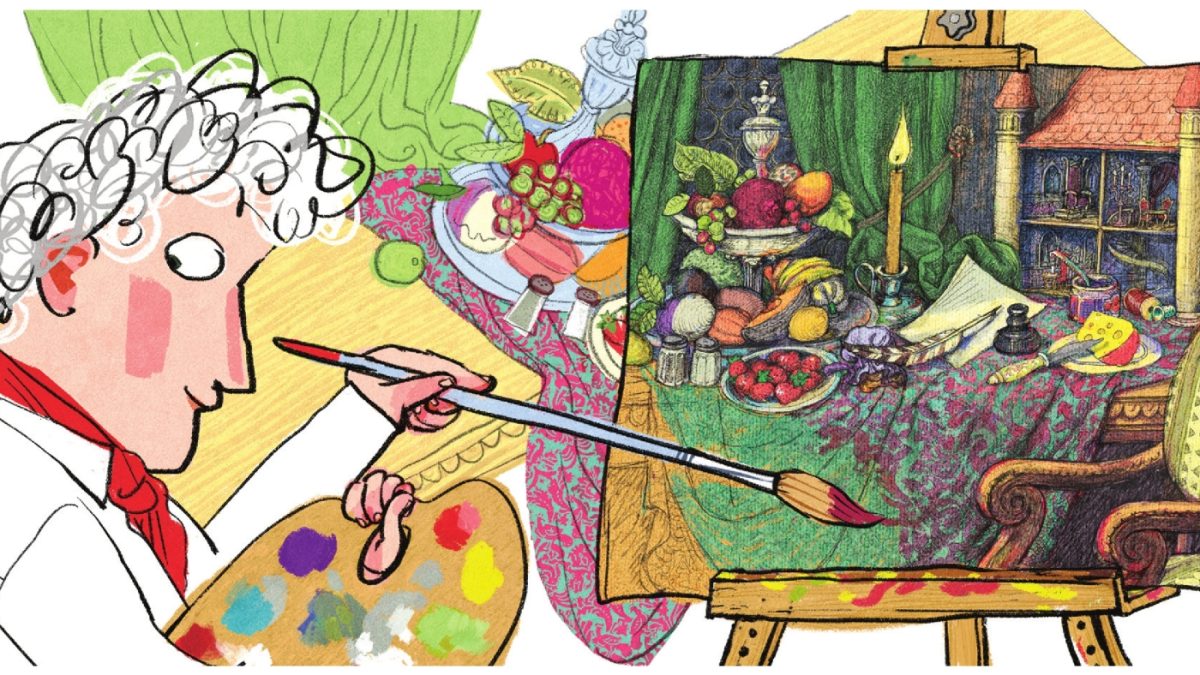
Illustrations © 2024 Paul O. Zelinsky/HarperCollins Publishers
In a still life painting, the subjects cannot move. The bowl of fruit remains sedentary on the table. The hunk of cheese goes uneaten. The candles do not flicker. That’s the rule according to the very authoritative artist in Alex London’s new children’s book, Still Life. Unfortunately for the artist, his still life painting doesn’t care about the rules.

Illustrations © 2024 Paul O. Zelinsky/HarperCollins Publishers
Instead — a mouse takes a bite out of the hunk of cheese and leaves its jammy footprints on the tablecloth. A knight chases a dragon and a princess goes on a quest. Coins spill, ink splatters, the tablecloth falls off the easel and the painting has gone entirely rogue.
“A lack of sleep is an essential part of my process,” jokes author Alex London, “as is vivid hallucinations and trying to make myself laugh.”
The idea for Still Life came to London in the middle of the night — he was feeding his newborn daughter and staring at a book with a fine art print on the cover.

Illustrations © 2024 Paul O. Zelinsky/HarperCollins Publishers
“It was a 17th century Dutch breakfast painting,” London remembers. “So it’s a painting of sort of an abundant table covered in breakfast things. And the more I looked at it, the more I could imagine a story playing out in this painting.”
Illustrator Paul O. Zelinsky says when he got the manuscript, he thought it was hilarious. But he didn’t know if it would be hilarious once it was illustrated. “The only way I thought I could tell whether it would be as funny with pictures was to make pictures,” Zelinsky says. And it was!
“I finished it and it was really funny,” Zelinsky laughs. He does have some advice, though, for aspiring illustrators: “Don’t ever do what I did. This is the most ridiculous way to approach a decision whether to illustrate a book.”
Both Alex London and Paul O. Zelinsky say they love reading Still Life with children.

Illustrations © 2024 Paul O. Zelinsky/HarperCollins Publishers
“Young listeners start out so serious and their faces are so earnest,” says London. “And then as the painting starts to defy the words I’m reading aloud, you can see them in the crowd starting to scurry, to whisper to each other, ‘That’s not what’s happening! He’s wrong, he’s wrong!'”
At the end of one visit, London remembers, the kids all started to chant “Opposite! Opposite! Opposite!” when they realized what was happening in the pictures was the opposite of what London was reading. “That’s what I want the children to realize, that you don’t have to obey these authoritative voices,” he says. “It is really a book about defiance.”
Zelinsky agrees. “That insistence on order has to be opposed,” he says.
And that’s why, when London autographs their book, he writes “Don’t move!”
So that Zelinsky can add, “Move!”

Illustrations © 2024 Paul O. Zelinsky/HarperCollins Publishers
